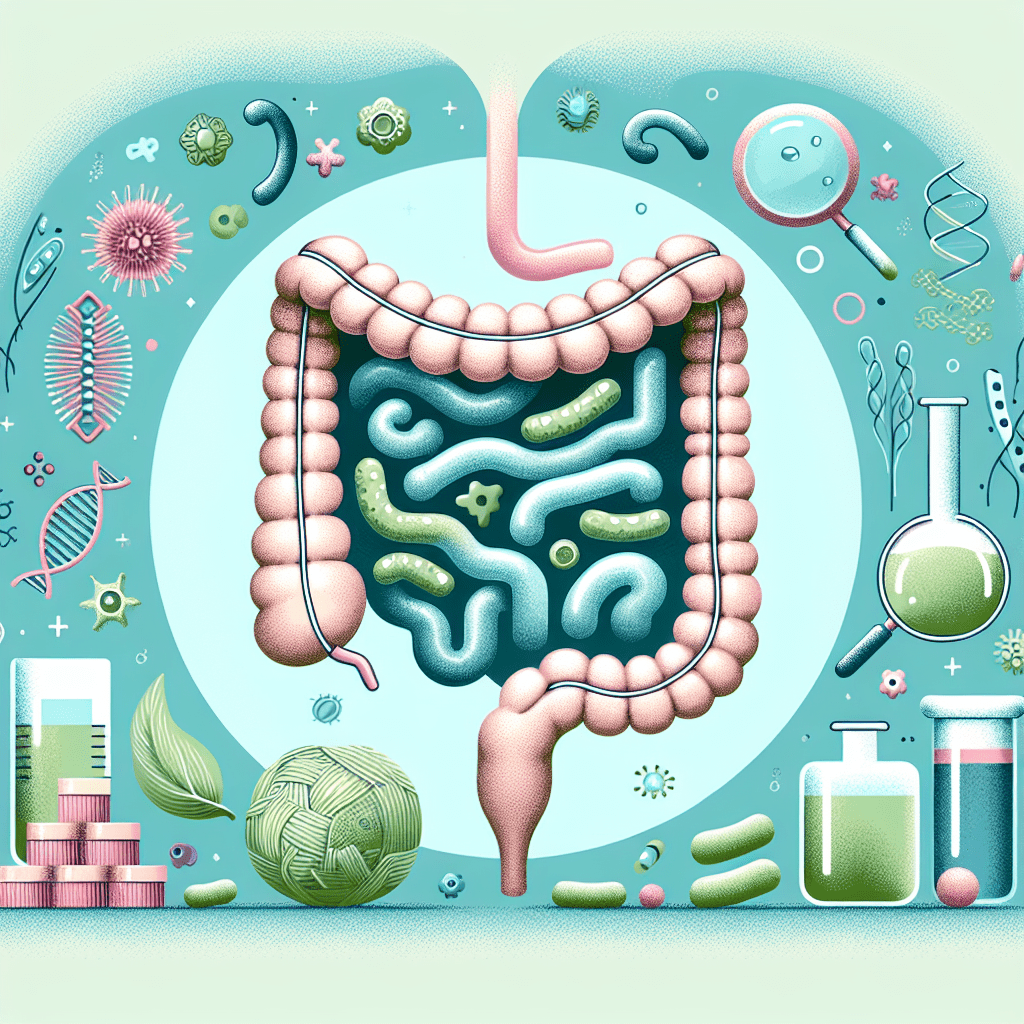
How can I restore my gut health?
Gut health has become a major focus in wellness circles, but understanding how to concretely improve it often requires more than general diet advice. This blog post explores detailed, science-backed strategies to restore your gut health by leveraging the power of gut microbiome testing. We’ll discuss how your gut microbiome affects overall well-being, how customized test results guide recovery efforts, and address key questions like “What causes gut imbalances?” and “Which probiotics are right for me?” Whether you’re struggling with digestion, inflammation, or simply want to feel your best, this comprehensive guide will help you make informed decisions based on your unique microbiome profile.
I. Understanding Gut Health: The Foundation of Your Wellbeing
Gut health refers to the state and functionality of the gastrointestinal (GI) tract, which includes everything from the mouth to the colon. At the center of this system is the gut microbiome—a complex ecosystem made up of trillions of microorganisms, including bacteria, viruses, fungi, and archaea. These microorganisms not only aid in digestion, but also contribute to immune function, mental health, nutrient synthesis, and the prevention of metabolic diseases.
The gut microbiome is increasingly considered a “second brain” because of its intricate connection with the central nervous system via the gut-brain axis. This intricate relationship means that gut health can influence mood disorders, stress response, and even cognitive decline. A well-balanced microbiome supports nutrient absorption, helps create essential vitamins like B12 and K2, and offers protection against harmful pathogens.
However, this balance is delicate. Factors like a poor diet (especially one high in processed foods), antibiotics, environmental toxins, and chronic stress can disrupt the microbial landscape, leading to what’s known as dysbiosis—an imbalance between beneficial and harmful bacteria. Dysbiosis is linked to numerous health conditions like irritable bowel syndrome (IBS), leaky gut, obesity, autoimmune diseases, and even anxiety and depression.
Enter gut microbiome testing—a scientifically validated tool that provides a snapshot of your microbial composition. With advancements in next-generation DNA sequencing, it's now possible to analyze your gut ecosystem with remarkable specificity. A typical test provides data on microbial diversity, ratios of key phyla (such as Firmicutes and Bacteroidetes), and the presence of pathogens, yeast overgrowth, or inflammatory markers.
These tests serve as the starting point for truly personalized gut health strategies. Instead of guessing what dietary changes or supplements might help you, you can now identify exact deficiencies and imbalances in your gut microbiota. This makes interventions more targeted, efficient, and successful. For instance, if your results indicate a lack of butyrate-producing bacteria, you can incorporate specific fibers and prebiotics known to nourish those strains.
To begin uncovering your own gut composition, consider using a reputable at-home test such as the InnerBuddies Microbiome Test. It’s designed for easy sample collection and provides a clinically backed report that helps translate complex data into actionable insights. By better understanding your unique gut environment, you empower yourself with the tools needed to design an effective gut health restoration plan tailored to you.
II. Exploring Digestive Wellness: How Gut Microbiome Testing Guides Your Journey
Digestive wellness is the cornerstone of overall health and vitality. It encompasses everything from efficient nutrient absorption and effective elimination to stable energy levels and minimal gastrointestinal discomfort. When digestive wellness is compromised, symptoms like bloating, cramping, food sensitivities, acid reflux, and irregular bowel movements become common. Disruptions in digestive function can also contribute to systemic issues such as chronic inflammation, immune dysregulation, hormonal imbalances, and mood disorders.
Gut microbiome testing is a crucial tool in identifying the root causes of these digestive issues. Rather than treating symptoms superficially, this type of testing offers a deeper look into what might be driving dysfunction at the microbial level. By analyzing the composition and activity of gut bacteria, healthcare practitioners and individuals themselves can pinpoint imbalances that may otherwise remain undiagnosed.
For instance, the detection of high levels of opportunistic pathogens such as Candida or Clostridium difficile can explain recurrent gastrointestinal infections or persistent bloating. Meanwhile, low levels of beneficial species like Akkermansia muciniphila or Faecalibacterium prausnitzii may point to a weakened intestinal lining or reduced anti-inflammatory activity. These insights are essential for tailoring interventions aimed at improving both digestive efficiency and overall resilience.
There are also functional markers that a quality microbiome test will identify. These include short-chain fatty acid (SCFA) production capacity, mucosal immunity indicators, and metabolic byproducts like hydrogen sulfide. For example, low SCFA production, particularly butyrate, is linked to poor colonocyte nourishment and may contribute to conditions like irritable bowel syndrome (IBS) or ulcerative colitis.
Once these insights are available, a personalized strategy can be developed. This might involve incorporating prebiotics that feed specific beneficial strains, adopting a low FODMAP diet temporarily to reduce symptoms of SIBO (small intestinal bacterial overgrowth), or introducing antimicrobials to control pathogenic species. Enzymatic support or bile acid modulators may also be recommended depending on the data.
Microbiome testing thus becomes your digestive wellness compass—guiding you through complex biochemical territory with the clarity of precision diagnostics. Used in collaboration with a functional medicine practitioner or gut health expert, these reports translate raw data into structured healing protocols. As the gut microbiota continues to be a central figure in health research, incorporating this level of testing becomes not just beneficial but essential for those navigating digestive challenges.
III. Achieving Microbiome Balance: Diagnosing and Addressing Dysbiosis
The human microbiome functions best when it's diverse, balanced, and stable. This balance is central to avoiding a wide array of physiological and psychological disturbances. Dysbiosis, or microbial imbalance, occurs when beneficial microbes diminish and pathogenic ones gain dominance. While this imbalance can be subtle, its effects are often profound—ranging from ongoing indigestion to autoimmune flare-ups, chronic fatigue, skin issues, and mental fog.
Microbiome testing is pivotal in diagnosing dysbiosis. It provides a detailed report on microbial diversity (how many different species are present), richness (abundance of species), and community composition. These metrics help identify if dysbiosis is present and what type—whether it’s reduced diversity, pathogenic overgrowth, underrepresentation of keystone species, or all of the above.
Common causes of dysbiosis include:
- Antibiotic Use: Broad-spectrum antibiotics, especially when overused, can wipe out beneficial strains and create space for opportunistic pathogens to thrive.
- Poor Diet/Lack of Fiber: Diets low in plant foods and high in processed sugars and saturated fats correlate with reduced bacterial diversity and increased inflammation.
- Chronic Stress: The gut-brain axis ensures that emotional stress can alter gut motility, increase cortisol production, and shift microbial communities.
- Environmental Exposures: Toxins, heavy metals, and even sleep deprivation can influence microbial balance.
Interpreting microbiome test results expertly allows for targeted remediation. For example, if test results show an overgrowth of inflammatory-producing bacteria such as Proteobacteria, the individual may benefit from anti-inflammatory foods rich in polyphenols, targeted antimicrobials, and immune-modulatory nutrients like glutamine and zinc. If beneficial short-chain fatty acid producers are scarce, a high-fiber diet rich in resistant starches, beta-glucans, and fermentable oligosaccharides may be prescribed.
Diversification of your microbial environment is another key to achieving balance. Consuming a varied diet with ample fermented foods (sauerkraut, kefir, kimchi) and fibrous fruits and vegetables supports microbial proliferation. Some may also benefit from soil-based probiotics or spore-forming bacteria known to improve diversity and immune activation.
Restoring microbiome balance often involves a triple-action approach: removing dysbiotic factors, replacing with beneficial inputs (like prebiotics and probiotics), and regenerating damaged intestinal environments. By closely following the recommendations that come with the InnerBuddies Microbiome Test, you can create a targeted, measurable plan that progressively rebuilds gut integrity, reduces inflammation, and enhances resilience.
IV. Implementing Gut Reset Strategies: Resetting Your Microbiome for Better Health
A gut reset aims to recalibrate your digestive system, promote healing, and reintroduce a healthy microbial ecosystem. Often, people attempting a gut reset do so with little guidance, relying on one-size-fits-all cleanses or elimination diets. However, the most effective resets are based on personalized data—specifically, microbiome test results that identify the nature and extent of microbial imbalance.
The foundational goal of a gut reset is to eliminate sources of inflammation and toxicity, while simultaneously rebuilding the integrity of the gut lining and replenishing beneficial bacteria. A typical gut reset protocol includes multiple phases: a cleanse/detox phase, a rejuvenation phase with nutrient-rich foods and supplements, and a maintenance phase that ensures long-term balance.
With microbiome data in hand, you can customize each phase. For example, high levels of pathogenic microbes may call for temporary interventions like antimicrobial herbs (e.g., oregano oil, berberine), followed by re-introduction of fermented foods and specific probiotics. A shortage of Akkermansia muciniphila—a bacterium associated with mucin regulation in the gut lining—would call for supplementation with cranberry extracts or polyphenol-rich foods known to support its growth.
Dietary modifications are central to the reset. Based on test outcomes, certain foods may be avoided (e.g., high lectin or FODMAP foods) while others are emphasized. Fiber, often touted as a gut superfood, becomes even more critical during this process. Soluble and insoluble fibers both fuel beneficial bacteria, which in turn produce SCFAs essential for gut wall integrity and reduced inflammation.
Fasting can also be a powerful way to reset the microbiome. Intermittent fasting, time-restricted eating, or longer-term fasts (as tolerated) give your digestive system a break, allowing for autophagy and mucosal regeneration. Test results may indicate microbial environments more suited to shorter fasting windows or longer-term calorie restriction.
Importantly, progress should be monitored. Re-testing the microbiome after 8–12 weeks helps determine whether interventions are working, or if new adjustments are needed. This level of feedback turns a gut reset into a fine-tuned healing journey rather than a generic program.
Opting for a data-driven reset protocol, like one informed by the InnerBuddies Gut Microbiome Test, ensures that you address the root of imbalance rather than merely managing symptoms. Think of it as rebooting your entire internal ecosystem—the kind of foundational reset that can set the stage for lifelong wellness.
V. Supporting Intestinal Recovery: Guided Approaches from Testing Insights
Recovery from a compromised gut involves more than just balancing the microbiome; it also requires healing the intestinal wall, restoring immune tolerance, and reducing inflammation inside the gut lumen. When the gut lining becomes permeable—a condition often referred to as “leaky gut”—toxins, undigested food particles, and bacteria can enter the bloodstream, triggering systemic inflammation.
Microbiome testing can be incredibly insightful in identifying early signs of intestinal damage. Markers that suggest inflammation or increased gut permeability include low levels of probiotics like Lactobacillus and Bifidobacteria, elevated endotoxin-producing bacteria, or an imbalance in certain yeast and fungal organisms. Some tests also measure gene expression associated with tight junction proteins, offering another layer of data on mucosal health.
Once testing points to intestinal permeability or damage, recovery should prioritize gut lining support. A combination of nutrients and bioactive compounds work synergistically to address this:
- L-Glutamine: An amino acid vital for enterocyte regeneration.
- Zinc Carnosine: Shown in studies to reduce intestinal inflammation and promote mucosal healing.
- Slippery Elm and Marshmallow Root: Mucilaginous herbs that provide a protective coating on the gut lining.
- Collagen and Bone Broth: Rich sources of glycine and proline, important for tissue repair.
Lifestyle changes are also crucial. Stress-reduction techniques like mindfulness, yoga, and moderate exercise have all been shown to positively influence gut permeability and microbiome balance. Likewise, sleep hygiene contributes to detoxification and gut-brain modulation.
With microbiome test data, you can continuously adapt the healing regimen. For instance, if inflammatory markers decrease over time, you can start reintroducing some previously eliminated foods, monitor tolerance, and fine-tune your supplement regime. Regular follow-ups using the InnerBuddies Gut Health Test enhance this dynamic process—giving you real-time metrics on your intestinal recovery journey.
Intestinal healing isn’t just about symptom relief; it’s about rebuilding the structural and functional integrity of the gut so it can continue protecting and nourishing you for the long term. With testing-derived insights guiding the way, recovery becomes a strategic, results-driven process.

